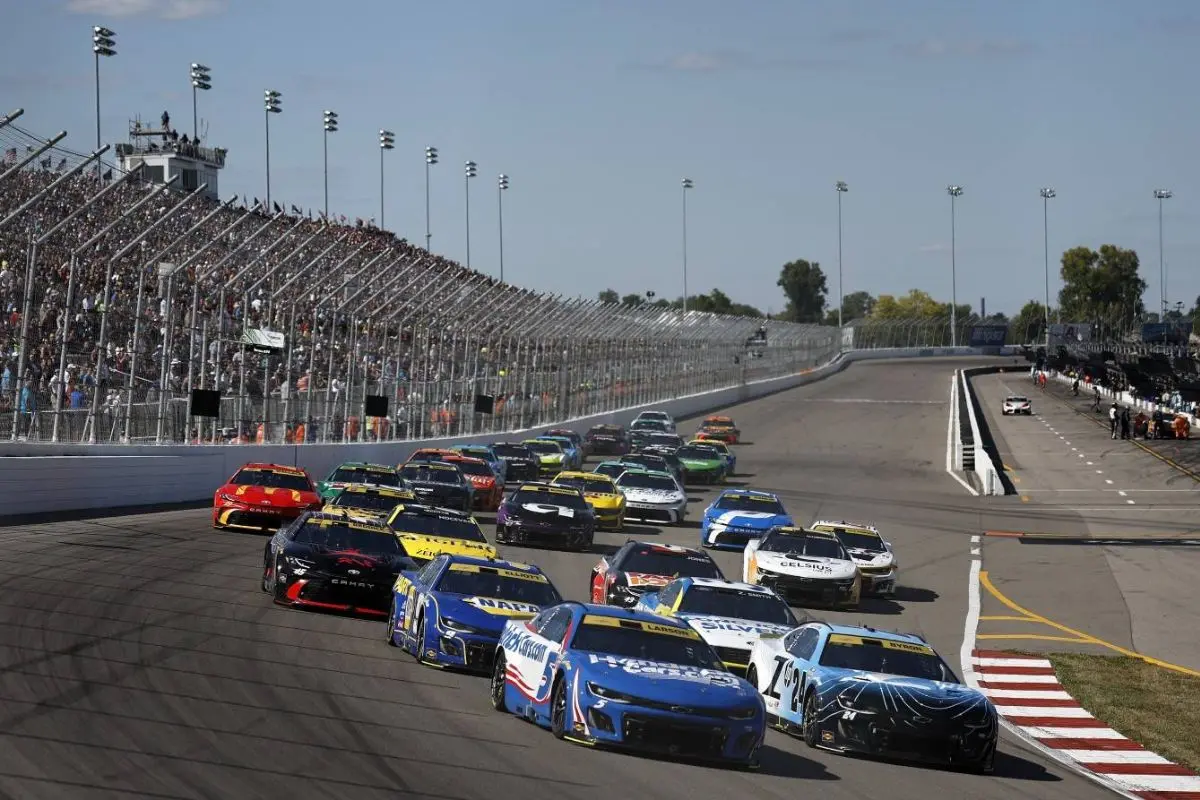NASCAR’s 2025 playoff season promised excitement and bigger ratings, but the numbers tell a different story. The first four Cup Series postseason races at Darlington, Gateway, Bristol, and New Hampshire all drew fewer than two million viewers, a surprising drop compared to previous years. Ryan Blaney’s win at New Hampshire attracted just 1.29 million fans, marking the lowest of the season. While debates rage over the playoff format, some insiders argue that the real challenge for NASCAR lies not in its rules, but in competition with other sports and changing viewer habits.
Key Highlights
- First four 2025 Cup Series playoff races drew under two million viewers.
- Ryan Blaney’s New Hampshire win drew only 1.29 million viewers.
- Danielle Trotta points to NFL and media distribution as main viewership challenges.
- NASCAR’s Prime Video races reached 2.1 million viewers, up 36% among 18–34-year-olds.
- Fans and drivers debate playoff format versus overall schedule and accessibility.
Playoff Format or Bigger Competition?
NASCAR’s playoff system, including the “win and you’re in” approach, has been criticized by some fans and former drivers for favoring luck over consistent season-long performance. Proposals for 2026 include expanding the championship race to multiple events or returning to a traditional 36-race schedule. However, Danielle Trotta, a host on Amazon Prime and reporter for TNT, believes the playoff structure is not the main culprit behind falling ratings. She argues that external factors, particularly the NFL, are siphoning casual viewers from NASCAR.
“Radical change is often met with criticism, but I believe it’s necessary for health of the sport. Our playoff format is not why ratings drop in the fall, football is. If NASCAR wants casual fans & younger demo we should end our season before Sept 1st & offer all races thru network streaming apps & streaming services. We have to meet young people where they are.” – Danielle Trotta
Trotta emphasizes that reaching younger fans through streaming platforms is key, noting that Prime Video broadcasts drew 2.1 million viewers over five races this summer and increased 18–34-year-old viewership by 36 percent. The contrast with traditional cable playoff races, which underperformed, highlights the importance of media placement and accessibility.

Viewership Trends and Fan Concerns
NASCAR’s playoff losses stand out when compared with other sports. The NFL consistently pulls more than 20 million viewers per week, dominating the fall sports calendar, while Formula 1 races in the U.S., such as the Azerbaijan Grand Prix, averaged 1.1 million viewers despite airing at 7 a.m. ET. Fans have questioned why NASCAR struggles against head-to-head competition with the NFL despite strong on-track racing, signaling that the sport’s scheduling and promotion might be more impactful than any single-race format.
“Say it louder for the people in the back Todd 🗣️.” – Danielle Trotta (replying to fan on X)
Critics also point to the lack of breakout personalities in today’s NASCAR. Unlike the eras of Dale Earnhardt and Jeff Gordon, contemporary drivers have yet to capture widespread cultural attention, and fewer young talents are emerging from grassroots American racing. Combined with tighter pack racing from the Next Gen car, the connection to a new generation of fans appears thinner than in past decades.

Trotta’s Perspective on NASCAR’s Future
For Danielle Trotta, the solution extends beyond rule tweaks. She believes that NASCAR must strategically place its events and make them easily accessible to streaming audiences. The playoff format, while often scrutinized, is secondary to broader media and scheduling challenges. Former driver Kenny Wallace has echoed this viewpoint, emphasizing that exposure and audience accessibility are essential for long-term health and growth. By adjusting the timing of races and embracing digital platforms, NASCAR could better compete for attention in a crowded sports landscape.
“Radical change is often met with criticism, but I believe it’s necessary for health of the sport.” – Danielle Trotta
Trotta argues that catering to younger audiences, who have multiple entertainment and sports options, is crucial. Without meeting fans where they consume content, NASCAR risks losing relevance and viewership, even if the racing product remains strong. Her comments underscore that external pressures, such as NFL competition, may be a larger factor than any playoff controversy.
Radical change is often met w criticism but I believe it’s necessary for health of the sport. Our playoff format is not why ratings drop in the fall, football is. If NASCAR wants casual fans & younger demo we should end our season before Sept 1st & offer all races thru network… https://t.co/19vVhg8Fsp
— Danielle Trotta (@DanielleTrotta) September 26, 2025
News in Brief: Repoter Point to the Real Threat Behind NASCAR’s Viewership Decline
The 2025 NASCAR Cup Series playoffs have struggled in viewership, with the first four races under two million viewers and Ryan Blaney’s New Hampshire win drawing just 1.29 million. Danielle Trotta argues the decline stems from NFL competition and media distribution challenges, not the playoff format. NASCAR’s Prime Video summer broadcasts performed well, with a 36 percent increase among younger viewers. Fan concerns include lack of breakout personalities and fewer emerging young drivers. Adjusting race schedules and expanding streaming access could help NASCAR maintain relevance and attract a broader audience. Follow NASCAR for live updates and coverage this weekend.
ALSO READ: 2025 NASCAR Playoff TV Ratings at New Hampshire Revealed
